How to Rebrand your Business – a Simple Guide
Rebranding is a delicate manoeuvre that many companies approach with trepidation. It's understandable – change is significantly difficult when altering something as fundamental as a business's brand identity. This identity encompasses everything from logo design, name, and tagline to messaging, visual design, and brand voice. Tweaking any of these elements risks confusing customers and employees alike.
However, rebranding is sometimes a necessary step for continued growth and relevance. Shifting market conditions, new competitors, mergers, or other factors may gradually erode the resonance of a brand's existing identity. Or a company may have outgrown its old brand, needing something more suited to its current size and strategy. In these cases, a thoughtful rebrand can re-energise a business and propel it into its next expansion phase.
The key is to rebrand your business carefully, preserving existing brand equity while introducing new elements tailored to present-day needs. It should be a natural evolution, not a disruptive overhaul. With proper planning and execution, it can be an opportunity to engage customers and rally employees around a shared vision of the future.
Would your business benefit from rebranding? This article offers step-by-step guidance on when and how to refresh your brand identity. It outlines potential motivations, strategies, and best practices. Even if you feel your current brand is working fine, it doesn't hurt to understand the rebranding process in case you need it later. A proactive perspective now will prepare you to react decisively when business needs, or market forces eventually call for a change. With the right approach, rebranding can unlock new levels of growth and success.
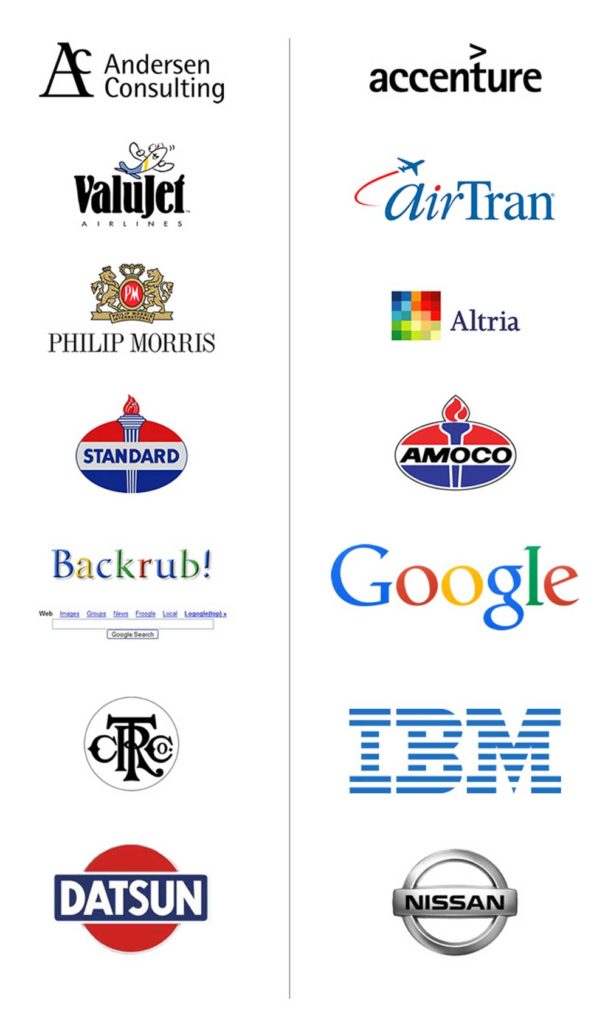
Rebranding can seem like an intimidating monster that will devour your time and money, potentially without even generating profit. However, don't let fear hold you back! The outcome depends on many factors, with your attitude being the most critical.
It's vital to view rebranding as an essential process demonstrating a brand's capacity to evolve and grow. Your willingness to embrace change could yield many benefits, including standing out from competitors and connecting with new target audiences. Both can lead to increased profits and success. If you feel your brand has plateaued and ceased expanding, a revamp may be worthwhile despite the risks.
In addition to breaking through barriers, rebranding showcases your flexibility and ability to adapt to modern trends, a significant plus. While rebranding requires substantial effort, how you leverage your brand book to convey messaging and display uniqueness says a lot about the company itself.
While rebranding takes substantial effort, a stellar brand book that captures your brand's essence while allowing room for growth will enable a smooth transition. You can re-energise your brand and propel future success with a clear direction and commitment to evolve.
Table of Contents
Brand Book
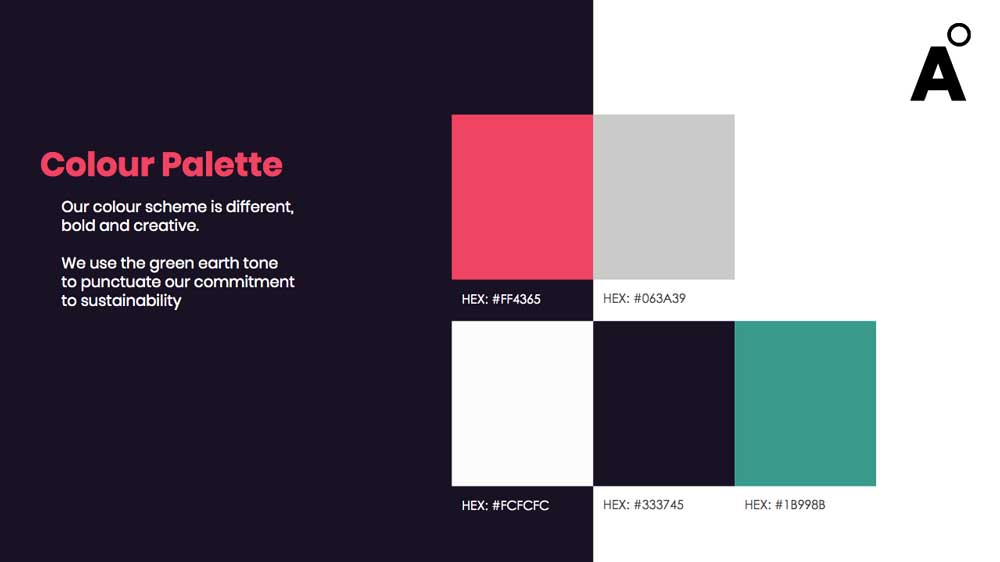
A brand book is essential for any business looking to build recognition, consistency, and streamline decision-making. Here's why you need one:
1 – Recognition.
A solid visual identity helps customers instantly recognise your brand. When you see the bitten Apple logo, you immediately think of Apple and their sleek, user-friendly products. A unified brand presentation creates these instant associations in people's minds.
The graphics, logo, colour scheme, and other elements defined in your brand book will make your business more memorable. People will learn to identify your brand at a glance.
2 – Consistency.
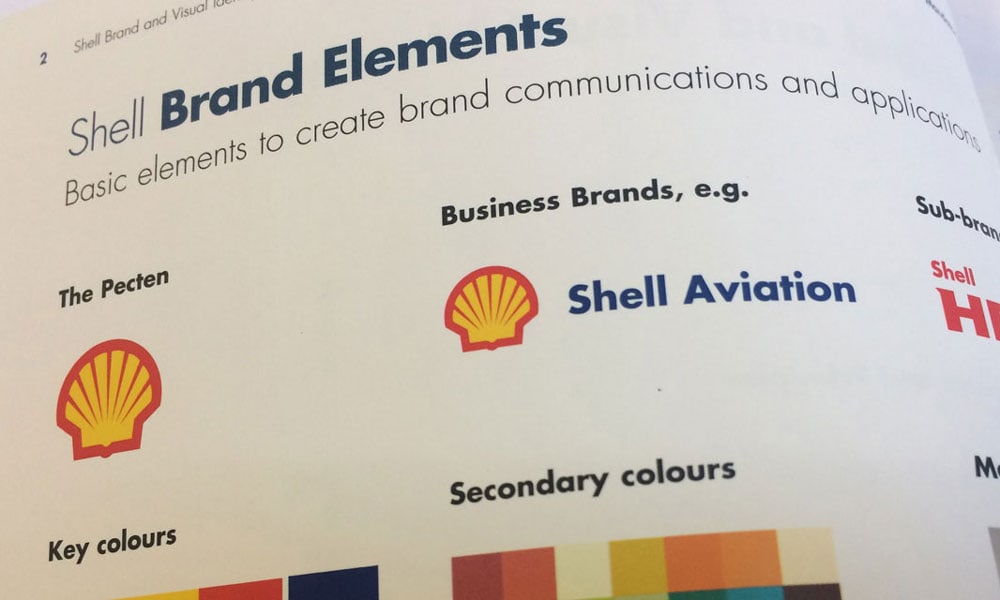
Your brand book establishes a consistent identity across all touchpoints. Without guidelines, employees and partners may portray your brand differently.
For example, if your logo can be resized, you'll want size restrictions in your brand book. This prevents your logo from being displayed too small or ridiculously large. Consistent use of fonts, colours, imagery, and messaging is critical.
3 – Decision-making.
Your brand book eliminates constant deliberation over brand details. Do you use sans-serif or serif fonts? Which blue tone is your official brand colour? Decisions made today will carry forward.
Meetings to approve brand assets one by one would be exhausting. A brand book clarifies guidelines for designers, writers, and anyone working with your brand.
Beyond recognition, consistency, and decision-making, what exactly goes into a brand book? Some key sections include:
- Logo – Explain acceptable uses, size constraints, space around the logo, and variations like black-and-white
- Colour Palette – Show primary and secondary colours with HEX codes
- Typography – List approved fonts for headings, body text, captions, etc.
- Image Style – Provide examples of on-brand photography and illustrations
- Voice & Tone – Define your brand's personality and style of writing
- Graphic Elements – Buttons, icons, and other reusable visual assets
- Design Inspiration – Show examples of on-brand designs, ads, websites, etc.
- Usage Guidelines – Clarify any misuses to avoid with examples
As your brand evolves, you may need to add new sections to your brand book. For instance, if others incorrectly use your logo, add specific guidelines with do's and don'ts. Other extras could cover branded merchandise, signage, or press releases.
Refreshing your brand book is not the only part of rebranding. You'll also re-evaluate your mission, research competitors, analyse trends, and potentially overhaul your visual identity. But a well-defined brand book is the north star through any brand changes. It captures the essence, which makes customers choose you.
How to Rebrand Your Business Successfully?

Step 1: Evaluating Your Current Brand Identity
The first step to rebrand your business is to examine your existing brand identity and determine what is and isn't working. Ask yourself some key questions:
- What are the core values, mission, and vision of your company? Does your current branding accurately reflect these? If not, what needs to change?
- Is your branding memorable, distinctive, and aligned with your target audience? Would a new logo, colour scheme, or slogan better capture their attention?
- What feelings and associations does your current branding evoke? Are these congruent with how you want customers to perceive your company?
- Does your branding translate well across different formats and platforms like your website, social media, packaging, etc? Or does it need to be adapted for specific uses?
- Are any aspects of your branding that feel outdated, generic, or no longer fit? What could be modernised or refreshed?
Examine your website, logo, colour scheme, fonts, messaging, and more. The goal is to pinpoint what your branding communicates now versus what you want it to convey after rebranding. This analysis will guide your strategy for revamping specific elements.
Solicit feedback from your team, customers, and outside perspectives to identify blind spots. Be open to criticism about what isn't resonating. The more insight you can gain into current perceptions of your brand, the better you can shape it going forward.
Step 2. Listen to your customers.
Your customers are the lifeblood of your business. Their needs, wants, and feedback should inform and shape your offerings. Make a habit of actively soliciting customer input through surveys, focus groups, social media monitoring, and other channels. Don't just listen – act on what you hear.
Some ways to gather customer perspectives:
- Send out customer satisfaction surveys periodically to get quantitative data on their experiences. Look for pain points and areas for improvement.
- Reach out to unhappy customers who have complained or given low ratings. An empathetic call or email can go a long way in turning them into promoters.
- Monitor social media conversations related to your brand. Customers will often voice their honest thoughts publicly. Take note of recurring themes.
- Host in-person or virtual focus groups. Ask open-ended questions to understand better customer thought processes.
- Analyse user data and feedback from your website and apps. Where are customers dropping off? What features are they engaging with?
- Talk to customer-facing team members. Frontline employees often have valuable insights into customer sentiment.
- Seek customer input when developing new products or campaigns. Get their takes early and often.
- Share user-generated content like testimonials and reviews. This shows that you genuinely listen to your customers.
Uber is an excellent example of a company that rebounded after listening to customers. After a series of scandals, Uber updated their brand image to be more inclusive and reflect customer values better. They brought back their iconic “U” logo many customers loved and missed. The company revamped their culture to be more customer-centric. Uber's willingness to listen, take feedback, and change demonstrated respect for its users. This eventually helped restore customer trust and usage.
Listening to customers should be an ongoing process, not a one-off event. Regularly connect with them across different channels to understand their evolving needs. Then use those insights to improve your business actively. Valuing your customers' voices can strengthen loyalty and fuel growth.
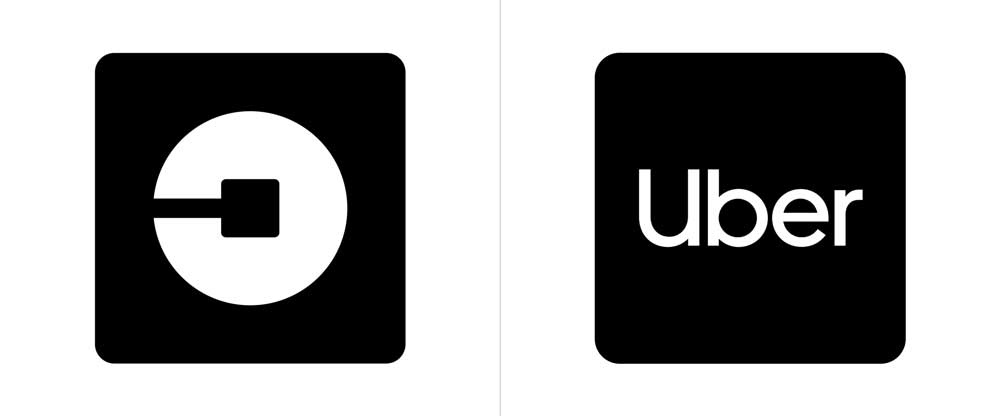
Step 3. Accommodate trends and changes.
As times change, brands must evolve and stay current while maintaining their core identity. Here are some tips:
- Monitor design and marketing trends. Is minimalism in? Are graffiti-style illustrations popular? Use trends subtly to make your brand feel fresh and modern. But don't completely reinvent your visual identity whenever a new trend emerges.
- Update your colour palette if needed, but keep one or two signature colours recognisable as “your” brand colours. Coca-Cola tweaks the hue of red it uses but never abandons red.
- Consider updating your logo, but opt for modernisation, not a complete redesign. Add or remove elements, simplify/complexity, but don't deviate too far from your original logo. Redesigns that are too drastic risk alienating your existing customer base.
- Look for small ways to update your branding on packaging, advertisements, website, etc. Change fonts, use a popular texture or pattern, and add new icons or visual elements that feel current.
- Keep your core brand message and mission the same; adapt your messaging to resonate with modern audiences. Lean into new trends like storytelling, transparency, and social responsibility.
The key is striking the right balance between staying fresh and new while maintaining the distinctive visual and verbal identity that makes your brand recognisable. Minor tweaks enable you to appeal to new audiences without confusing or losing existing brand loyalists.
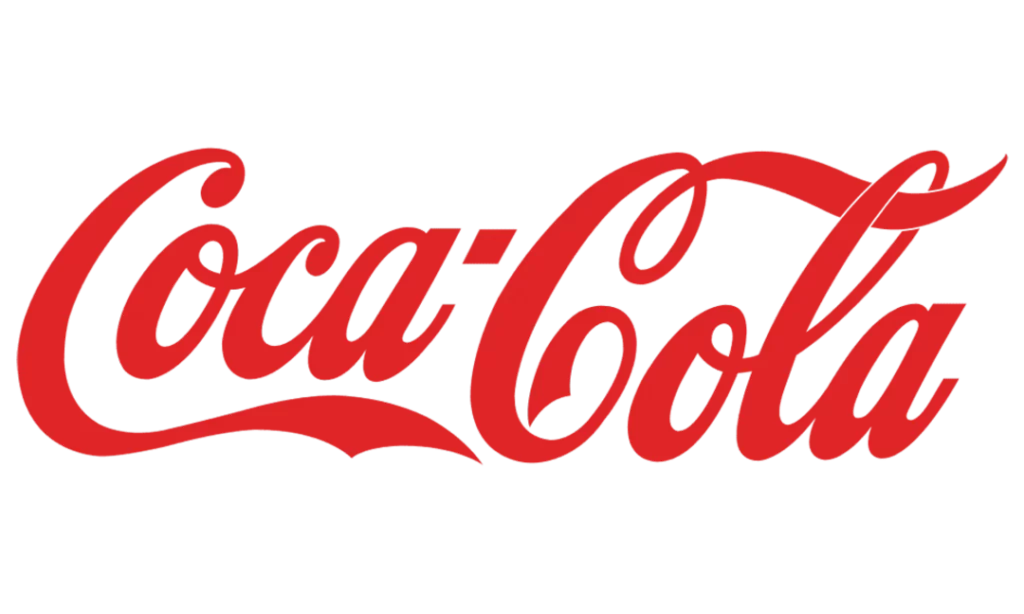
Coca-Cola has remained a relevant and iconic brand for over 130 years through its ability to adapt and rebrand itself to align with changing consumer tastes and trends. Though the original Coca-Cola recipe has stayed the same since 1886, the company has introduced new variations of the soda along with innovative marketing campaigns to attract each emerging generation.
In the 1980s, Coca-Cola suffered backlash when it changed the original recipe and introduced New Coke. However, just months later, it reverted to the original formula as Coca-Cola Classic, showing the company's willingness to listen and respond to customer feedback. Coca-Cola has since released successful new flavours like Cherry Coke, Vanilla Coke, and Coke Zero to appeal to changing preferences.
The brand has also evolved its marketing and advertising with the times. Coca-Cola's classic 1950s ads focused on cheerful families enjoying the soda, while recent ads emphasise themes like inclusion, diversity, and environmentalism. Coca-Cola adapts its branding and messaging to resonate with modern audiences and cultural values. Even its vintage branding, like the iconic Coke bottle shape and red and white logo, evokes nostalgia and tradition while still feeling fresh and contemporary.
Through frequent market research, customer engagement, and a willingness to reinvent aspects of itself, Coca-Cola has maintained global popularity and loyalty across generations. The company's long-running success shows that brands can thoughtfully evolve with societal changes while staying authentic to their core identity and product.
The key lessons are that successful brands must listen to customers, understand cultural trends, and find the balance between preserving tradition and innovating for the future. Rather than making sudden, drastic changes, brands thrive through intentional, incremental adaptations over time. Their identities evolve gradually to feel familiar yet new. By keeping its branding and marketing relevant, Coca-Cola has become one of the most recognisable and beloved brands worldwide.
Possible Issues With Rebranding

Client loss
Rebranding can be a risky endeavour, especially if it means potentially losing previous clients who were loyal to your old brand. However, with careful planning and execution, it is possible to undergo a successful rebrand without alienating your existing customer base.
The first step is to accept that some degree of customer attrition is inevitable with any rebrand. No matter how thoughtful the new brand strategy may be, some people will always resist change and decide to take their business elsewhere. This is normal and not necessarily a reflection of the quality of the rebrand itself. Acknowledging this reality will help you anticipate and manage the impacts.
A gradual transition is advisable to minimise the loss of existing customers. Introduce the new brand in stages over time, in bite-sized pieces, allowing customers to ease into the change. For example, the electronics company GoldStar transitioned smoothly into LG by slowly phasing out the old brand while bringing in the new. This gave customers time to get accustomed to “LG” before GoldStar was retired completely.
Alongside the gradual rebrand rollout, focus on overcommunicating with current customers to maintain relationships. Share the rationale and benefits of the transition. Incentivise loyalty by offering exclusive discounts for existing customers who stick with you. And provide stellar customer service throughout the process to keep people happy.
With careful execution that shows respect for existing customers, rebranding successfully without losing your customer base is possible. Accept some loss as inevitable, transition gradually, overcommunicate, and incentivise loyalty. Following these best practices can minimise attrition and set your rebranded company up for success.
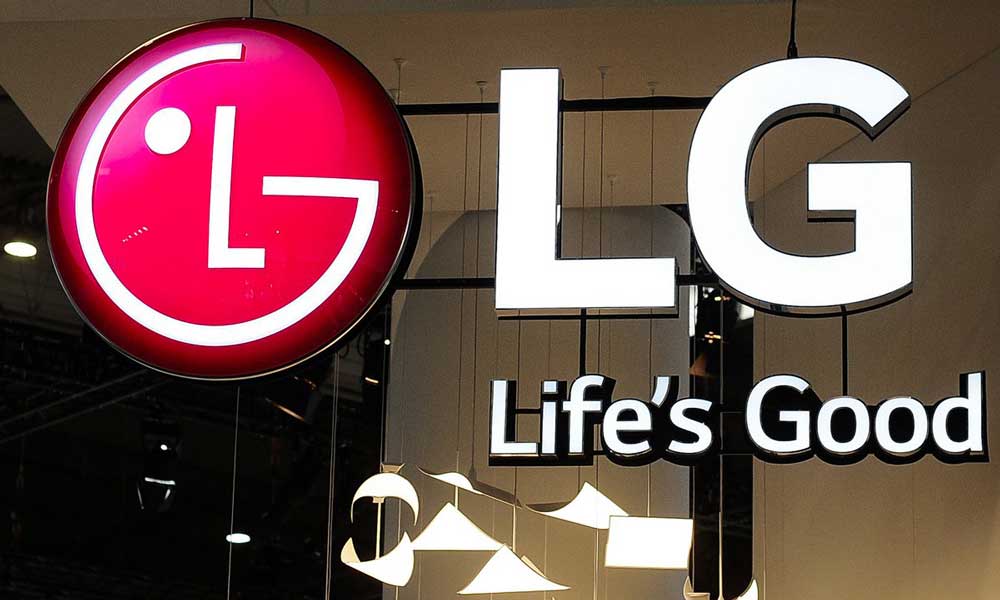
Rather than an abrupt change, they slowly transitioned to the new LG name by consistently appending it to their advertisements and communications.
For example, print and TV ads would end with “Lucky Goldstar – Life's Good.” Over time, the original name was phased out, while the new LG branding remained. This strategy allowed LG to maintain connection and familiarity with existing customers who knew the company as Lucky Goldstar while still establishing the new LG identity.
The gradual rebranding worked well for LG. By explaining the meaning behind “Life's Good” and linking it to its products and values, LG was able to retain loyal customers. Meanwhile, they introduced the rebranded company to new audiences. The tagline “Life's Good” gave the abbreviated LG name a meaningful identity.
When rebranding, marketing experts recommend being as transparent as possible in communicating changes to your audience. Strategies include publishing blog posts explaining the reasons for rebranding, creating sections on your website devoted to the new brand story, or even printing physical brand books that outline the evolution of your brand visual identity.
Being open helps customers understand why alterations are necessary. It also provides an opportunity to highlight how the rebranding aligns with customer wants and needs. This open approach eases the transition and retains brand loyalty after significant changes.
Just as LG seamlessly merged its old and new identities, thoughtful rebranding allows companies to honour their legacy while forging an exciting new future.
Lack of time
Time can slip away if you're not careful when rebranding your business. Hours can seamlessly turn into days and months of tedious work if you're unaware. However, there are ways to streamline the process so it doesn't consume all your time.
Focus groups are an efficient way to gather multiple perspectives and feedback in a short amount of time. Rather than meeting with stakeholders individually, which is time-consuming, you can hold a focus group meeting and get input from several people simultaneously. This allows you to analyse different aspects of the rebrand in a single sitting.
Employees from various departments can provide insights from their unique vantage points. The interactive format also generates ideas that may not arise in individual interviews. With careful planning and moderation, a focus group can reveal a wealth of helpful information in just one or two short sessions.
Specialised software is another time-saving tool for rebranding. Automating repetitive, mechanical tasks eliminates the need for manual labour and cuts down on excessive review cycles. For example, instead of endless emails back and forth on design proofs, a software program with built-in collaboration tools like chat and annotations streamlines the approval process.
Team members can discuss changes in real-time rather than slowly through email chains. Workflow automation keeps projects moving steadily forward, preventing the inertia that comes from waiting. With software taking care of the busywork, you can focus your time on high-level branding strategy.
In summary, focus groups and purpose-built software inject efficiency into rebranding. When used proactively, these tools can help prevent a rebrand from monopolising your schedule. A little upfront planning goes a long way toward maintaining steady progress and momentum.
Final Thoughts
Rebranding a business is undoubtedly a significant undertaking, but with careful planning and execution, it can lead to enormous benefits. While the process may seem daunting initially, following a step-by-step approach can make it much more manageable. The key is to be thorough in your research, thoughtful in your strategy, and creative in your execution.
Fundamentally, a successful rebrand requires diligence, respect for your existing customer base, and innovation. Do your homework to fully understand your company's history, values, and goals for the future. Listen to your customers' needs and concerns through surveys, focus groups, and other feedback forms. Brainstorm fresh ideas that capture your business's essence while appealing to current and potential new clients.
Patience is also paramount. Realise that a rebrand will take time to resonate and yield results. Stay focused on the long-term benefits, even when the initial response is underwhelming. Refine and adjust your branding over time, continually evolving it to align with your business strategy.
Even if your company seems stuck in a rut, rebranding can provide the jolt you need to break through. The rewards of redefining your brand identity, from boosted awareness to increased sales, make the effort worthwhile. With vision, commitment and creative problem-solving, you can transform your brand and take your business to new heights.
These tips provide encouragement and a plan of action as you rebrand your business. While it requires significant effort, the payoff of renewed energy and growth for your business makes it a valuable endeavour. Approach it systematically, enlist support, and don't be afraid to think outside the box. Best of luck with your rebranding journey!
